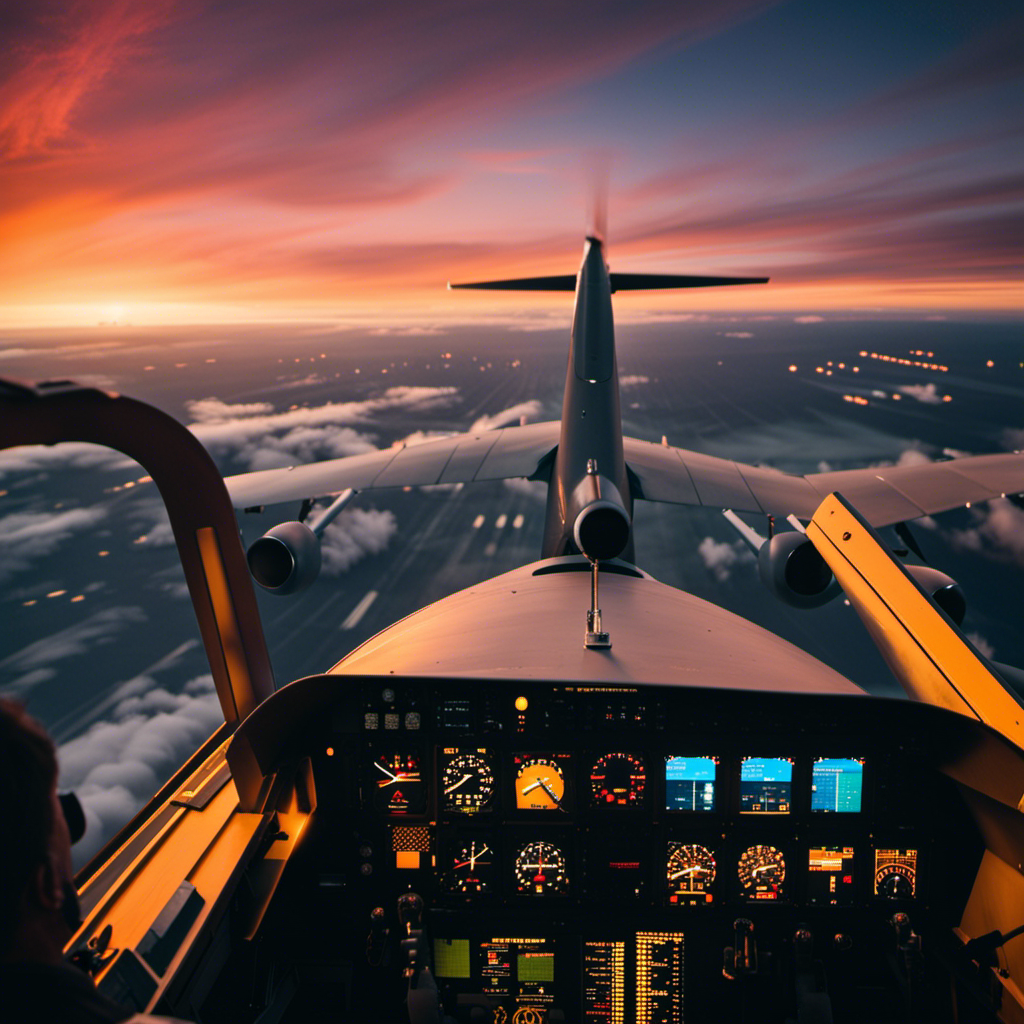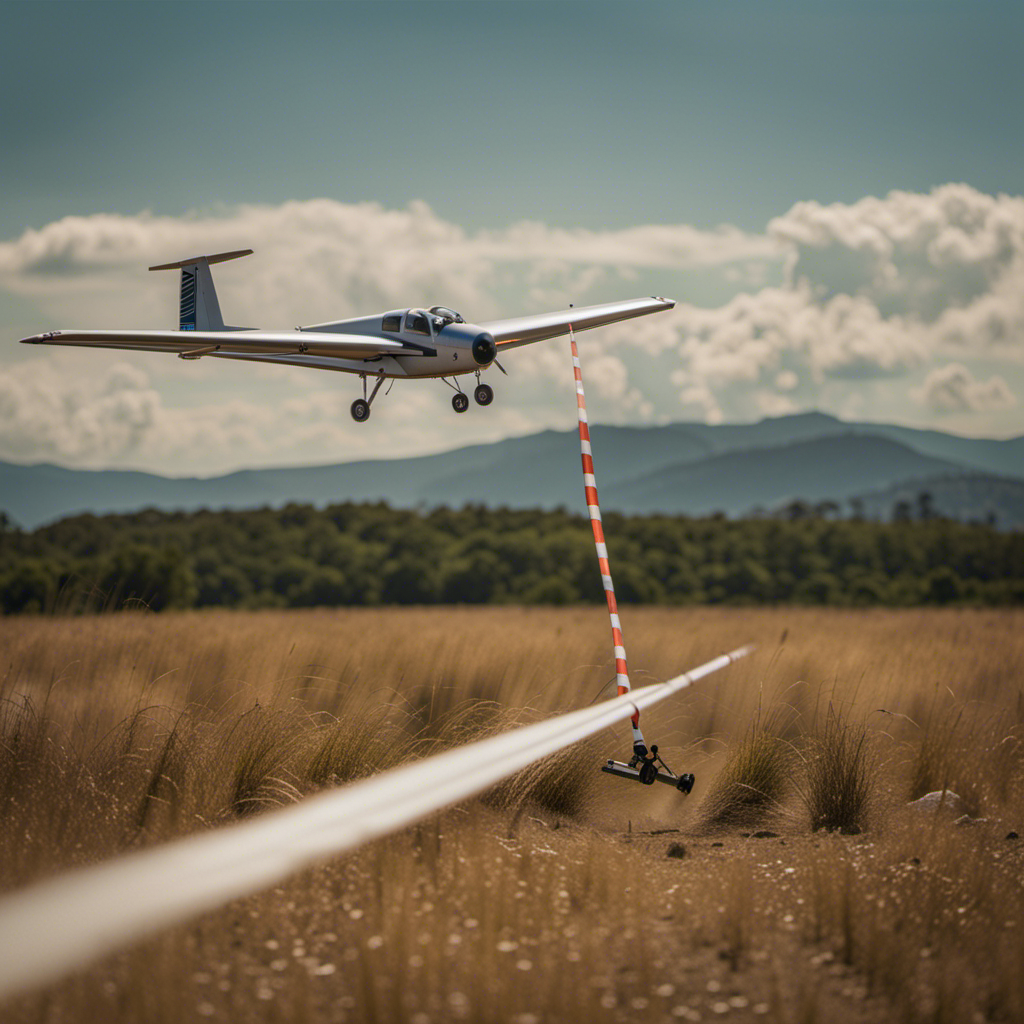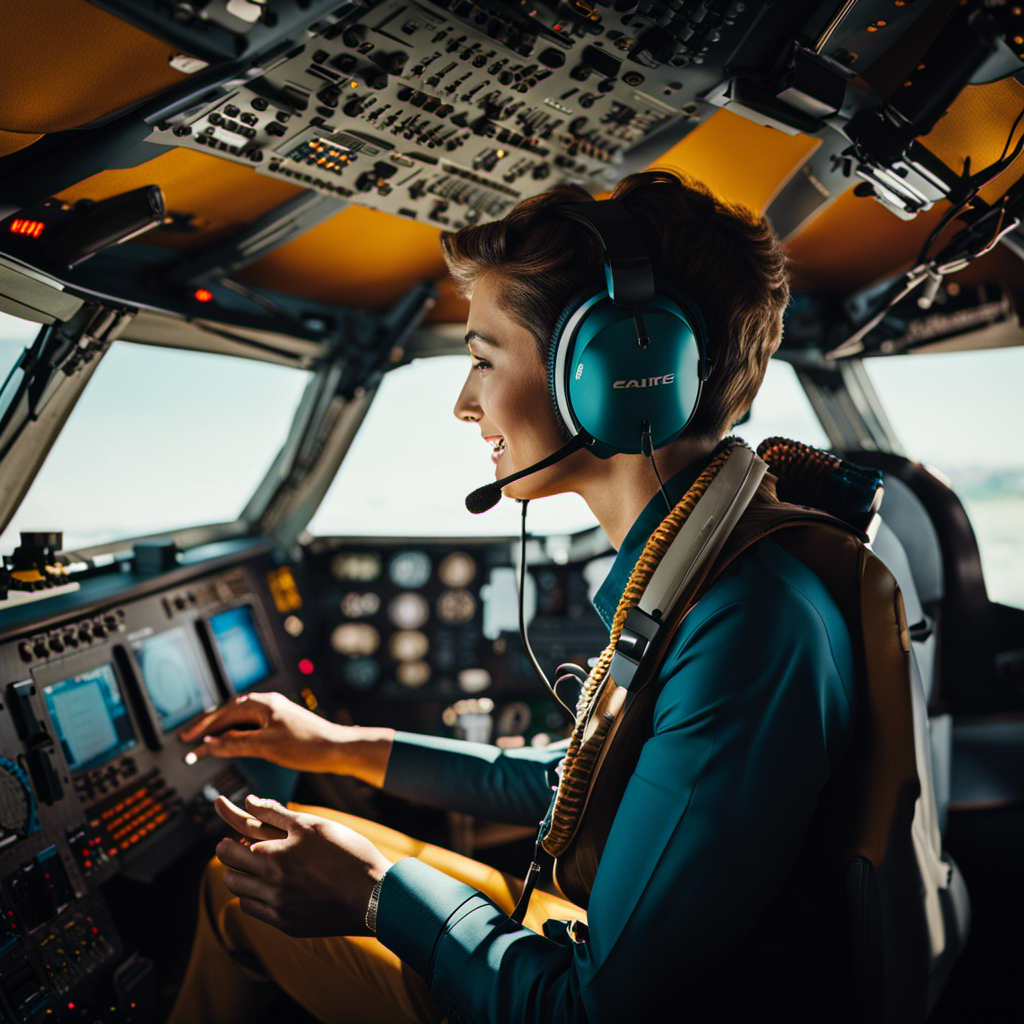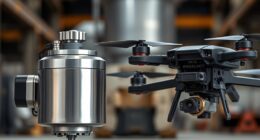As a pilot, I often reflect on the moments leading up to takeoff. Did you know that, even with our extensive training and experience, it’s not uncommon for pilots to feel some apprehension during this crucial phase of flying?
In this article, we will explore the factors that may contribute to pilot nervousness, the importance of passenger comfort, and the measures we take to overcome our own anxieties for the sake of safe and smooth flights.
So, let’s delve into the world of pilot emotions and unravel the truth behind takeoff jitters.
Key Takeaways
- Pilot training and experience play a crucial role in managing nervousness during takeoff.
- Factors such as performance pressure and self-imposed or external pressure can impact a pilot’s mindset.
- Techniques like deep breathing exercises and prioritizing passenger comfort can help manage nervousness.
- Boosting pilot confidence through experience, practice, and successfully handling scenarios is important for a smooth takeoff.
The Importance of Pilot Training and Experience
Pilots’ training and experience play a crucial role in ensuring safe takeoffs. Understanding pilot psychology is essential in addressing any anxiety or nervousness that may arise during this critical phase of flight.
Through rigorous training programs, pilots are equipped with the necessary skills and knowledge to handle various situations with confidence. Flight simulations, in particular, are an integral part of pilot training. These simulations allow pilots to practice takeoffs repeatedly in a controlled environment, helping them develop muscle memory and familiarize themselves with the procedures involved.
Understanding the Physiology of Anxiety
Understanding your body’s physiological response to anxiety can help you manage nerves during takeoff. Anxiety triggers can vary from person to person, but the physiological responses are similar. When anxiety kicks in, the body’s "fight or flight" response is activated, causing an increase in heart rate, shallow breathing, and heightened alertness. These physical symptoms can be unsettling, especially for pilots who need to stay focused during takeoff. To better understand the physiological response to anxiety, take a look at the table below:
| Physiological Response | Description |
|---|---|
| Increased Heart Rate | Heart beats faster than normal |
| Shallow Breathing | Rapid, shallow breaths |
| Heightened Alertness | Increased awareness and attention |
Factors that May Contribute to Pilot Nervousness
Recognizing certain factors that can contribute to your nervousness as a pilot is essential for effectively managing your emotions during takeoff. As pilots, our mindset plays a crucial role in how we perform during flights.
The pressure to deliver a smooth and safe takeoff can sometimes lead to feelings of anxiety and nervousness. Performance pressure, whether self-imposed or due to external factors, can greatly impact our confidence in the cockpit. It’s important to acknowledge these feelings and find ways to mitigate them.
Understanding that nervousness is a normal human response can help us approach it with a rational mindset. By focusing on our training, experience, and the meticulousness of our pre-flight checks, we can build a strong foundation to combat pilot nervousness.
This will enable us to transition seamlessly into addressing another critical aspect of flying: weather conditions.
Weather Conditions
Weather conditions can greatly impact the safety and smoothness of a flight. As a pilot, I am well aware of the significant role that weather plays in our performance. We receive detailed weather reports before every flight, allowing us to assess the conditions and make informed decisions.
Adverse weather conditions, such as strong winds, thunderstorms, or low visibility, can present challenges during takeoff and landing. These conditions require heightened focus and skill from pilots to ensure a safe and controlled flight. It is crucial for us to constantly monitor weather conditions throughout the flight and adjust our strategies accordingly.
By staying vigilant and adapting to changing weather patterns, we can effectively navigate through challenging conditions and prioritize the safety of our passengers and crew.
Speaking of safety, it’s important to note that weather conditions are not the only factor that can impact a flight. Mechanical issues, for example, can also pose challenges and require our immediate attention.
Mechanical Issues
When it comes to mechanical issues, pilots rely on their training and expertise to quickly address any problems that may arise during a flight. Mechanical troubleshooting is an essential part of a pilot’s job, and it requires careful decision-making to ensure the safety of the aircraft and its occupants.
Pilots are trained to assess the situation, determine the root cause of the problem, and take appropriate action to resolve it. This may involve consulting with maintenance personnel, following established procedures, or making real-time decisions based on their knowledge and experience.
Ultimately, the pilot’s goal is to ensure that the aircraft is in optimal condition to continue the flight safely.
Now, let’s transition to the next section and explore the challenges pilots face when operating at challenging airports.
Challenging Airports
When it comes to takeoff, pilots face various challenges. One of them is navigating through challenging runways. These runways can be shorter in length, have steeper inclines, or be located in areas with difficult terrain. As a pilot, I have experienced landing on runways that require intense concentration and precision. The challenging runways demand extra attention and focus to ensure a safe takeoff.
Here are three factors that make these runways particularly demanding:
- Short runway length: Pilots must carefully calculate the necessary speed and distance required for takeoff within a limited runway space.
- Steep inclines: These runways require pilots to control the aircraft’s pitch and power to maintain a proper climb gradient.
- Difficult terrain: Runways located in mountainous regions or near bodies of water pose additional challenges due to factors like high winds or limited visual references.
Navigating such challenging runways can undoubtedly increase pilot nervousness during takeoff. However, there are techniques for managing this nervousness that can help pilots maintain a calm and focused mindset.
Techniques for Managing Nervousness
To manage nervousness during takeoff, you can try implementing deep breathing techniques to help calm your mind and body.
It’s natural for pilots to experience some level of anxiety before takeoff, but there are ways to support them in managing their anxiety.
Deep breathing exercises are a simple yet effective technique that can be used to alleviate nervousness. By taking slow and deep breaths, you can activate your body’s relaxation response, which helps to reduce anxiety.
Deep breathing increases the oxygen supply to your brain and stimulates the parasympathetic nervous system, promoting a sense of calm and relaxation.
These techniques can be easily incorporated into pre-flight routines to provide pilots with the support they need to manage their anxiety effectively.
Deep Breathing Exercises
Deep breathing exercises are a helpful technique for managing nervousness, as they promote a sense of calm and relaxation. By focusing on your breath, you can shift your attention away from anxious thoughts and center yourself in the present moment. To practice deep breathing, find a comfortable position and close your eyes. Inhale deeply through your nose, allowing your belly to expand, and exhale slowly through your mouth, releasing any tension or stress. Repeat this process several times, allowing each breath to become deeper and more relaxed. Practicing deep breathing regularly can help reduce anxiety and enhance your overall well-being.
Below is a table highlighting different breathing techniques and relaxation exercises you can try:
| Breathing Techniques | Relaxation Exercises |
|---|---|
| Diaphragmatic breathing | Progressive muscle relaxation |
| Box breathing | Guided imagery |
| 4-7-8 breathing | Mindfulness meditation |
| Alternate nostril breathing | Yoga or stretching |
| Counted breaths | Body scan meditation |
These techniques can be used in combination or individually, depending on your preferences and needs. Transitioning into the next section, visualization and positive affirmations can further enhance your ability to manage nervousness and boost your confidence.
Visualization and Positive Affirmations
Visualization and positive affirmations are effective techniques for boosting confidence and managing nervousness.
Positive visualization involves creating mental images of successful outcomes and envisioning oneself performing well. This technique helps to alleviate anxiety and build self-assurance by programming the mind to focus on positive outcomes.
Similarly, self-affirmation techniques involve repeating positive statements about oneself to build self-confidence and combat self-doubt. By affirming one’s abilities and strengths, individuals can reinforce positive beliefs and reduce anxiety.
These techniques can be particularly useful for pilots who may experience nervousness during takeoff. By visualizing a smooth takeoff and affirming their skills and training, pilots can boost their confidence and manage any nervousness they may feel.
These methods provide pilots with a mental toolkit to overcome apprehension and perform at their best.
Moving forward, cognitive behavioral therapy offers additional strategies for managing anxiety without medication.
Cognitive Behavioral Therapy
When managing nervousness, you can benefit from cognitive behavioral therapy techniques that help reframe negative thoughts and modify behavior patterns. Cognitive behavioral therapy (CBT) is a well-established psychological treatment that focuses on identifying and changing negative thought patterns and behaviors. It can be particularly effective in managing anxiety and nervousness.
Through CBT, individuals learn to challenge their negative thoughts and replace them with more realistic and positive ones. They also learn to modify their behavior patterns and develop healthier coping strategies. By practicing these techniques, pilots can reduce their anxiety during takeoff and other stressful situations. This not only improves their overall well-being but also enhances their performance and decision-making abilities.
Transitioning into the next section about the role of crew resource management, it is important to note that CBT can complement the training provided in crew resource management by equipping pilots with effective strategies to manage their individual anxiety levels.
The Role of Crew Resource Management
To effectively manage the operation of an aircraft, it’s crucial for you as a pilot to understand and implement the principles of crew resource management. This approach emphasizes the importance of teamwork and effective communication strategies to enhance pilot performance and ensure the safe and efficient operation of the aircraft.
In order to achieve these goals, there are several key principles that you should keep in mind:
-
Clear and concise communication: Effective communication between crew members is essential for sharing critical information and coordinating actions.
-
Situational awareness: Maintaining a thorough understanding of the aircraft’s current situation enables better decision-making and risk management.
-
Leadership and assertiveness: As a pilot, it’s important to assert yourself when necessary and take charge of the situation to ensure the smooth functioning of the crew.
By implementing these principles, pilots can enhance their performance and promote a culture of effective communication and teamwork within the aviation industry.
This lays the foundation for the subsequent section on effective communication and teamwork, which further explores these concepts.
Effective Communication and Teamwork
Remember, effective communication and teamwork are crucial for ensuring the safe and efficient operation of the aircraft. As a pilot, I understand the importance of clear and concise communication with the entire crew, including the co-pilot, air traffic control, and ground staff. Through effective communication, we are able to share vital information, coordinate our actions, and make informed decisions. This allows us to work together seamlessly, ensuring a smooth and successful flight.
Teamwork is equally essential, as it fosters collaboration, trust, and mutual support among the crew members. By working together as a team, we can overcome challenges, handle emergencies, and execute our duties efficiently. This strong foundation of effective communication and teamwork sets the stage for the crucial support we receive from the cabin crew.
Support from Cabin Crew
As a pilot, you rely on the support and assistance of the cabin crew to ensure a safe and comfortable flight for all passengers. The pilot-cabin crew relationship is crucial in maintaining effective communication and teamwork.
Here are four ways in which the cabin crew supports pilots:
-
Pre-flight briefing: The cabin crew provides important information about passenger numbers, special requirements, and any potential issues that may affect the flight.
-
Safety checks: Before takeoff, the cabin crew ensures that all safety equipment is in place and functional, including seat belts, emergency exits, and oxygen masks.
-
In-flight assistance: Throughout the flight, the cabin crew assists with passenger needs, handles any emergencies, and communicates important updates to the pilot.
-
Emergency procedures: In the event of an emergency, the cabin crew follows established protocols to ensure the safety of all passengers and provides vital information to the pilot.
The support and collaboration between pilots and cabin crew are essential for a successful flight.
Now, let’s transition to the next section about pre-flight preparation and checklists.
Pre-flight Preparation and Checklists
Before you begin your flight, it’s important to go through pre-flight preparation and checklists to ensure a smooth and safe journey.
As a pilot, my focus is on mental preparation, which involves reviewing the aircraft’s systems, weather conditions, and flight plan. By going through these checklists and mentally preparing myself, I am able to approach the flight with confidence and a clear mind.
Pre-flight preparation also includes physically inspecting the aircraft, checking fuel levels, and ensuring all necessary equipment is on board. This thorough preparation helps alleviate any potential issues that may arise during the flight.
Now, let’s delve into the impact of experience on pilot confidence, as it plays a crucial role in the successful execution of a flight.
The Impact of Experience on Pilot Confidence
As a pilot, I understand the importance of pre-flight preparation and checklists in ensuring a smooth and safe takeoff. However, even with all the necessary procedures in place, there is still the question of how experience impacts a pilot’s confidence during this critical phase of the flight.
- Experience plays a significant role in building a pilot’s confidence during takeoff.
- Pilots with more flight hours tend to have a better understanding of the aircraft’s capabilities and performance.
- Familiarity with different weather conditions and airport layouts also boosts a pilot’s confidence.
The more experience I gained as a pilot, the more confident I became during takeoff. The countless hours spent practicing, encountering various scenarios, and successfully handling them all contributed to building my confidence in this phase of flight. This confidence is essential because it allows me to focus on executing the takeoff procedures accurately and efficiently.
Transitioning into the subsequent section, it is crucial to discuss safety measures and reducing risk to ensure a safe and comfortable flight for all passengers.
Safety Measures and Reducing Risk
To ensure a safe and comfortable flight for all passengers, it’s important for you to familiarize yourself with safety measures and ways to reduce risk.
As a pilot, my well-being and psychological support are crucial factors in maintaining a high level of safety. Airlines prioritize the mental health of their pilots by providing resources such as counseling services and peer support programs. These initiatives help us cope with the demands of the job, reducing the chances of stress-related errors. Additionally, regular check-ins with aviation psychologists ensure that we are mentally fit to fly.
By addressing our psychological well-being, airlines are taking proactive steps to ensure a safer flying experience for everyone.
Now, let’s move on to the importance of regular maintenance and inspections in maintaining flight safety.
Regular Maintenance and Inspections
During takeoff, pilots rely heavily on the safety measures and risk reduction strategies discussed earlier. However, ensuring the safety of the aircraft and the passengers goes beyond just these measures.
Regular maintenance and inspections play a crucial role in maintaining the airworthiness of the aircraft. As a pilot, I am aware of the importance of regular maintenance checks, which include routine inspections of the engine, control surfaces, landing gear, and other critical components. These checks are conducted by trained mechanics who follow strict guidelines and regulations.
Additionally, pilot training also emphasizes the importance of conducting pre-flight inspections to identify any potential issues before takeoff. By adhering to these maintenance procedures, pilots can have confidence in the airworthiness of the aircraft, reducing the likelihood of unexpected issues during takeoff and flight. This dedication to regular maintenance sets the foundation for a safe and smooth journey.
Now, let’s delve into the next aspect of pilot preparedness: emergency preparedness training.
Emergency Preparedness Training
In emergency preparedness training, you’ll learn how to effectively respond to unexpected situations while maintaining the safety of the aircraft and passengers. It is crucial for pilots to be well-equipped and knowledgeable in emergency response and crisis management.
Here are some key skills and techniques we learn during this training:
-
Rapid decision-making: When faced with an emergency, pilots must assess the situation quickly and make crucial decisions to ensure the safety of everyone on board.
-
Effective communication: Clear and concise communication is essential for coordinating emergency procedures with the cabin crew and air traffic control.
-
Crew resource management: Working as a team is vital during emergencies. Pilots are trained to effectively delegate tasks and utilize the skills and knowledge of all crew members.
-
Stress management: Emergency situations can be highly stressful. Pilots are taught techniques to manage stress and remain focused on the task at hand.
By acquiring these skills, pilots are well-prepared to handle any crisis that may arise during a flight. This ensures the safety and well-being of the passengers and crew.
Transitioning into the subsequent section, it is also important for pilots to prioritize passenger comfort and confidence during emergencies.
The Importance of Passenger Comfort and Confidence
Ensuring passenger comfort and confidence is essential for creating a positive and reassuring flying experience.
As a pilot, I understand the importance of making passengers feel at ease during all phases of the flight, including takeoff. While it is natural for passengers to feel some nervousness during this time, it is crucial for us pilots to maintain a calm and confident demeanor.
Our mindset plays a significant role in passenger reassurance. By demonstrating professionalism, expertise, and a focus on safety, we can help alleviate any anxieties passengers may have.
Through thorough training and experience, pilots develop the skills to manage their own nerves, allowing us to confidently guide the aircraft into the air. This ability to overcome nervousness is vital for safe flights.
Conclusion: Pilots’ Ability to Overcome Nervousness for Safe Flights
When you’re able to overcome your nerves and maintain a calm and confident demeanor during takeoff, you contribute to creating a positive and reassuring flying experience for passengers.
As a pilot, it is crucial to undergo extensive training to develop the necessary skills and knowledge to handle the challenges that may arise during flight. This training not only focuses on technical aspects but also on mental preparedness and stress management.
Understanding anxiety physiology is an integral part of pilot training, as it allows pilots to recognize and address the physical and psychological symptoms of nervousness. By learning techniques such as deep breathing, visualization, and positive self-talk, pilots can effectively manage their anxiety and maintain a professional composure throughout the flight.
This not only ensures safe and smooth takeoffs but also instills confidence in passengers, making their flying experience more enjoyable.
Frequently Asked Questions
How do pilots manage their nervousness during takeoff?
As a pilot, I understand that managing nervousness during takeoff is crucial. To maintain a confident pilot mindset, I utilize coping strategies such as deep breathing, positive self-talk, and relying on my training and experience.
Are there any specific techniques or exercises that pilots use to calm their nerves?
Ironically, pilots don’t need relaxation techniques or breathing exercises because takeoff is a breeze. However, if they did get nervous, deep breathing and mindfulness techniques could help calm their nerves.
What is the role of crew resource management in helping pilots overcome nervousness?
The role of crew resource management in helping pilots overcome nervousness is crucial. Effective communication and training play a vital role in ensuring that pilots are well-prepared and confident during takeoff and other critical phases of flight.
How does experience impact a pilot’s confidence in handling takeoff?
Pilot experience plays a crucial role in building confidence during takeoff. Techniques like crew resource management help manage nervousness. Safety measures, combined with experience, ensure pilots can handle takeoff with minimal nervousness.
What safety measures are in place to ensure a safe takeoff despite pilot nervousness?
Safety protocols and pilot training are key in ensuring a safe takeoff. Measures such as pre-flight checklists, communication with air traffic control, and simulator training help mitigate pilot nervousness and ensure a smooth and secure takeoff.
Conclusion
In conclusion, pilots possess the ability to overcome nervousness for safe flights. Through rigorous training and experience, they develop the skills and knowledge necessary to handle any situation that may arise.
Despite the potential for anxiety, pilots remain calm and focused, ensuring the safety and comfort of their passengers. Just as birds effortlessly soar through the sky, pilots navigate through the clouds, guided by their expertise and unwavering determination.
So, the next time you board a plane, remember that your pilot’s nerves are mere whispers in the wind, effortlessly conquered for a smooth and secure journey.









